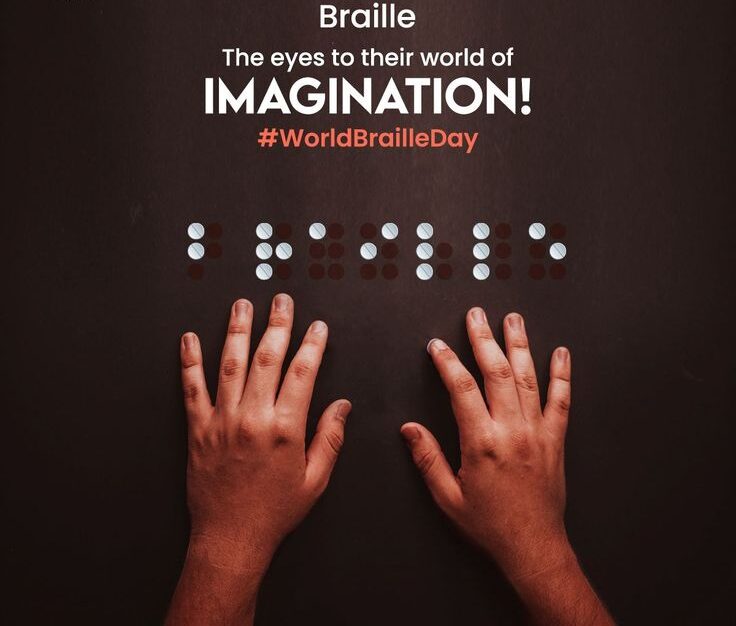World Braille Day: 7 Key Facts About Its Significance and Impact on Society
World Braille Day is celebrated annually on January 4th to honor the birth of Louis Braille, the inventor of the Braille system of reading and writing for blind and visually impaired individuals. This day not only acknowledges the life-changing impact of Braille on the visually impaired community but also raises awareness about the importance of accessible education, independence, and inclusion for people with disabilities.
What is World Braille Day?
World Braille Day was established by the United Nations in 2018 to recognize the significance of the Braille system, which allows people who are blind or have low vision to read and write independently. The day commemorates the birth of Louis Braille, a Frenchman who, at the age of 15, developed the tactile writing system that bears his name.
The celebration of World Braille Day is a reminder of the ongoing fight for equal access to education, opportunities, and rights for individuals with visual impairments. It also highlights the importance of Braille in providing a means of communication for the blind community, offering them greater independence and a way to actively participate in society.
History of World Braille Day
Louis Braille was born on January 4, 1809, in Coupvray, France. At the age of three, he tragically lost his eyesight after an accident in his father’s workshop. As a child, Louis faced great challenges in accessing education, as there were few resources available for visually impaired individuals at the time. Despite this, he excelled in his studies and attended the Royal Institution for Blind Youth in Paris, where he later became a teacher.
In 1824, inspired by a system of tactile writing called “night writing” used by the French army, Louis Braille developed a system of raised dots that could be read by touch. This revolutionary system, consisting of six dots arranged in a cell, allowed blind individuals to read and write efficiently. By 1829, Louis Braille’s system became widely adopted, and it changed the lives of countless people with visual impairments.
World Braille Day was officially declared by the United Nations in 2018 to honor Louis Braille’s contributions and to raise awareness about the rights of people with visual disabilities to access information and education in their preferred medium. The celebration of this day also draws attention to the challenges faced by blind individuals around the world, particularly in the fields of education, employment, and accessibility.
7 Key Facts About World Braille Day
- The Importance of Louis Braille’s Invention
Louis Braille’s invention has empowered millions of visually impaired individuals by providing them with the means to read, write, and communicate independently. Braille opens the door to literacy, education, and employment, which significantly improves quality of life for people with blindness or low vision. - Accessible Education for All
The Braille system has made a profound impact on education for blind and visually impaired individuals. Before Braille, blind students had limited access to learning materials, making it difficult to pursue education. With the introduction of Braille, textbooks, signs, and documents can now be produced in a format that allows blind people to read and study just like their sighted peers. - Raising Awareness
World Braille Day serves as an important occasion to raise awareness about the importance of accessibility, inclusion, and equal opportunities for people with visual impairments. It advocates for the rights of blind individuals to have access to education, employment, and social participation. - The Global Reach of Braille
The Braille system is used worldwide, and many countries have adopted the system as a standard for blind education and communication. In fact, there are different versions of Braille for various languages, allowing for a global community of individuals to access information and engage in written communication. - Challenges Faced by the Visually Impaired
Despite its widespread use, many visually impaired people still face challenges in accessing Braille materials. There is a shortage of Braille books and educational resources in some parts of the world, and Braille literacy rates remain low in certain countries. World Braille Day highlights the need for greater investment in accessible resources and support for blind communities. - Braille in Technology
Advances in technology have made it easier for blind individuals to access information and communicate using Braille. From Braille e-readers to smartphone applications, modern tools are making it possible for visually impaired people to access digital content in Braille. These innovations help increase independence and participation in a rapidly changing digital world. - Cultural Significance
Braille is not only a tool for communication but also a symbol of empowerment and inclusion. On World Braille Day, celebrations are held to honor the blind and visually impaired community, with events, workshops, and exhibitions organized to educate the public about Braille and its importance in creating an inclusive society.
How is World Braille Day Observed?
World Braille Day is celebrated in various ways around the world. In many countries, schools, advocacy organizations, and community groups organize events to raise awareness about Braille and the needs of the blind community.
Educational Events
- Schools and universities may hold educational activities where students learn about the history and significance of Braille, as well as the challenges faced by blind individuals.
- Teachers and advocates often host workshops to teach people how to read and write in Braille, allowing others to better understand the importance of the system.
Public Awareness Campaigns
- Government agencies, NGOs, and disability organizations may run campaigns to raise awareness about the importance of accessible education and the rights of blind people.
- Social media platforms are often used to share stories, facts, and images that highlight the importance of Braille and the contributions of Louis Braille.
Community Support and Outreach
- On this day, local organizations may host outreach programs, providing resources and assistance to visually impaired individuals to help them access educational materials and technologies.
The Significance of World Braille Day
World Braille Day holds immense significance for individuals with visual impairments. It is not only a day to honor the life and legacy of Louis Braille but also an opportunity to advocate for greater inclusion and accessibility in society. By raising awareness about the importance of Braille, we can work toward a world where blind and visually impaired individuals have equal access to education, information, and opportunities.
Furthermore, the day emphasizes the vital role that technology and innovation play in improving the lives of people with disabilities. From Braille e-books to advanced assistive technologies, modern advancements have made it easier than ever for blind individuals to engage in society and participate in education, work, and community activities.
Daily Life Impact of World Braille Day
World Braille Day encourages society to reflect on the daily lives of people with visual impairments. It calls attention to the challenges they face in navigating the world without adequate resources and access. It also urges communities to provide the tools necessary for blind individuals to live fulfilling, independent lives. From ensuring the availability of Braille signage in public places to promoting Braille literacy programs, World Braille Day acts as a call to action for a more inclusive society.
FAQs about World Braille Day
Q: Why is Louis Braille important?
A: Louis Braille invented the Braille system, which has allowed millions of blind and visually impaired individuals to read and write independently, significantly improving their education, employment, and quality of life.
Q: How is World Braille Day celebrated?
A: World Braille Day is celebrated with educational events, public awareness campaigns, workshops, and community outreach programs aimed at raising awareness about the importance of Braille and advocating for inclusion.
Q: What is the significance of World Braille Day?
A: World Braille Day celebrates the life of Louis Braille and highlights the importance of accessible education and equal opportunities for individuals with visual impairments.
Conclusion
World Braille Day is a powerful reminder of the importance of inclusion, accessibility, and the right to education for all individuals, regardless of their physical abilities. By celebrating Braille and its inventor, Louis Braille, we honor the contributions of the visually impaired community and continue to advocate for a more inclusive and equitable society. This day encourages everyone to reflect on how they can contribute to creating a world where all people have equal access to education, independence, and opportunities.










